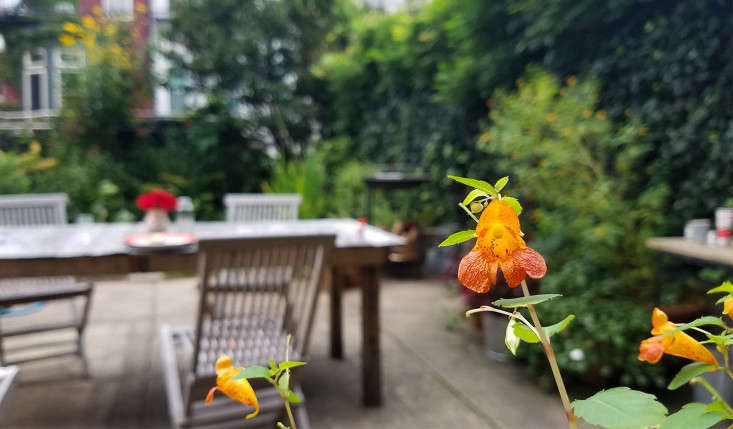Chrysanthemums are not only pronounced in a hurry (shortened to mums or chrysanths), they also are bought in a hurry—in random colors that look dyed, and often are. Between Halloween and Thanksgiving they occupy center stage as though there is nothing else around. Chrysanthemums, properly revered in China and Japan, deserve a more considered approach elsewhere, so for expert advice we’ve turned to Polly Nicholson of Bayntun Flowers, who has been growing them, slowly, for several years.
Photography by Britt Willoughby Dyer, for Gardenista.

Besides supermarket mums, there are flower show chrysanths. Polly is keen to clarify her own position, as a grower and arranger who is consulted by floral stylists: “We are not proper chrysanthemum growers,” she explains. “We are very experimental.” Because she and her head gardener do not spend hours de-budding stems in order to create one magnificent prize bloom, the flowers grow in a more natural way. This fits in with the growing ethos at Bayntun. As she explains, “We see how they go and find out what we like.”

“A huge exhibition flower wouldn’t fit into an arrangement,” says Polly Nicholson, to which the late garden writer Christopher Lloyd has concurred in The Well-Tempered Garden, adding: “The spray of spidery blossoms with spoon-ended quills that the flower arranger can revel in [shown here] would scarcely be recognized as a chrysanthemum at all by a specialist grower.”

A fact lost on the specialist or supermarket grower is the subtlety of this flower. “Chrysanthemums can be wonderfully soft and delicate,” says Polly. Burgundy foliage is a positive addition in some varieties, with flowers that are “quiet but interesting.”

Incorporating some traditional chrysanthemum growers’ rules while flouting others, Polly’s plants were pinched out when they were 2 to 3 feet tall, to stop the flower heads from being too numerous and small. Her plants now reach heights of 5 feet, leggier than their exhibition counterparts, and with flowers of differing sizes.

Some of the spider varieties are more tender, although all of Polly’s chrysanthemums are grown in a polytunnel. She plans to grow some tougher varieties outside but to extend the season and keep off excessive wind, rain, and insects, these are grown under cover and watered at the base. An unheated greenhouse would also work.

During the growing season, Polly feeds her chrysanthemums liquid organic sea weed every two weeks. They do best when staked, with plenty of space between plants. In the polytunnel at Bayntun, scent is more noticeable. “They have a divine, deep, earthy scent,” says Polly.

“I’ve really enjoyed using these quite strange colors,” says Polly who made all of the arrangements shown here. Better chrysanthemums in better colors are increasingly available for people to buy, she notes.



N.B.: How and why does a flower fall out of fashion? This is the latest installment of our series, Rethinking Flowers; see more old garden favorites that deserve a second chance:
- Gladiolus: Rethinking a Funeral Flower.
- Poinsettia: Rethinking a Traditional Christmas Flower.
- Red Hot Pokers: Rethinking a ’70s-Retro Flower.
- Anthuriums: Rethinking a Hotel Lobby Flower.









Have a Question or Comment About This Post?
Join the conversation